Tiny houses have grown hugely in popularity worldwide for many reasons. People are converting sheds into tiny homes to downsize, reducing the cost of living while at the same time reducing their environmental footprint. Living in a tiny house doesn’t mean being cramped; it’s just a better way to declutter your life.
Converting a shed into an intimate, tiny house can be a fun DIY project if you have time. It’s a simpler way to live, decluttering your life and living in a more minimalistic way. In addition, lowering expenses and the burden of a long-time mortgage helps provide a better quality of life.
Whether buying a premade shed shell or converting the shed on your property for your grown-up kids or retiring parents, converting a shed into a tiny home can be fun and challenging. Getting creative and making the most of your space is a great way to make a comfortable, livable space that you can call your tiny house.
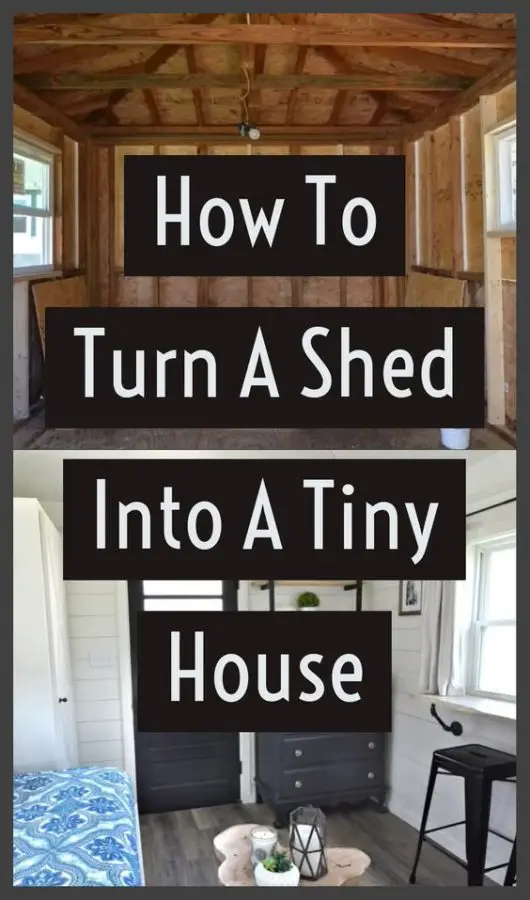
What Converting A Shed Into A Tiny House Entails
When turning a shed into a tiny house, consider some of the points below when making your plans.
1. Legal Points
There are many laws around tiny houses. For example, many municipalities have rules and guidelines for minimum square footage to be considered a habitable residence.
Each state, each county, and each municipality has its own set of rules regarding what they allow concerning tiny houses. Therefore, it’s best to research the legalities of tiny houses depending on which county you live in.
You may encounter red tape when you turn your shed into a tiny house, some of which are due to;
- Zoning Laws
- Building Codes
- HOA Rules
- Permits
The Tiny Home Industry Association provides a site where you can look up the laws and legislation depending on where you plan to set up your tiny house. Or you can look up the code of ordinances by the different states at Municode Library.
2. Level Foundation
If you have an existing shed in your backyard that you want to convert, make sure that your foundation is still in good condition and ideal for transforming your shed into a tiny house.
If you purchase the shell and transport it to your location, ensure you have a big enough surface for your new tiny home to be safely placed.
Sheds are generally placed on strategically positioned cinder blocks to avoid moisture and rotting of the walls and flooring due to constant contact with wet ground. There are several different foundations that you can use to ensure better support for the tiny home. Choosing one that works best for the structure is essential to ensure the design and shell last a long time.
3. Connecting Water
Consider how the water will get there depending on where you place the shed. You can connect some pipes from your main house to the shed, but if you are swopping your suburbia life for a more rural environment that provides space and country living, you need to consider where the water will come from.
- Rainwater collection
- Underground water source
- County-provided water
4. Connecting Electricity
Electricity is another point to consider when converting your shed into a tiny home. Do you have access to electricity, or are you considering going off the grid and using solar as your power source?
5. Connecting Sewage
Connecting your sewage is a crucial point to consider. Can you connect to the existing wastewater of your main home, or do you need to build a septic tank or French drain?
6. Heating And Cooling
Sheds can become excessively hot, and at the same time, when winter hits, the icy chills are sure to creep in. You need to consider what type of heating and cooling system you want to be installed that will fit in the tiny space.
7. Insulation
Most sheds will not be insulated, so choosing the proper insulation is vital to retain the temperature in the house. Popular insulation that is being used is open-cell foam insulation that is sprayed between the shell walls and the interior walls. This foam also helps seal off little cracks and holes you may have overlooked.
Steps To Converting Your Shed Into A Livable Tiny House
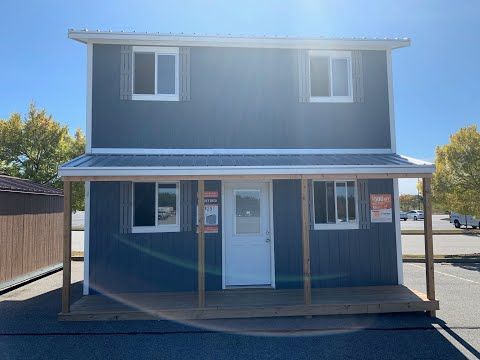
Once you have decided to join the tiny house movement, you must follow some steps to convert your shed into your new tiny house.
Step #1 Level Foundation
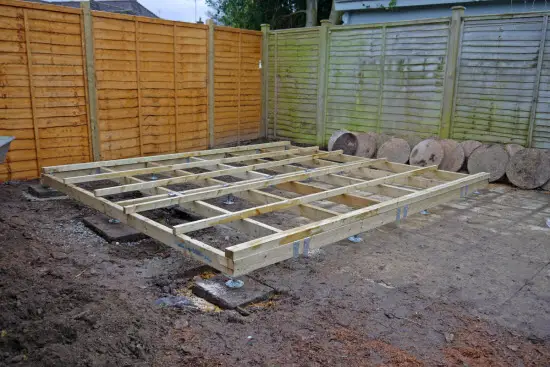
If you have a shed in your backyard, check that the foundation is solid and that rainwater is flushed away from the structure with an easy gradient. Pooled puddles of water around your shed or tiny house will eventually cause rot and damage to the structure and floor of the house due to moisture.
If you are buying a shell and having it delivered, make sure the base is leveled out by removing any debris and grass to provide a level base on which to work when placing your tiny house on.
You can choose different shed bases from concrete, timber bearing, decking block, and more. However, a level base with timber parameters and gravel is the most popular and cost-effective to build a solid foundation. At the same time, the gravels allow moisture and water to drain downward away from the house.
Step #2 Design The Interior
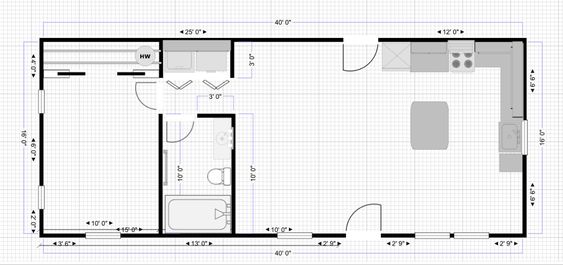
Plan a design for your tiny house. Plan where the bedroom, bathroom, and kitchen will be. Tiny houses must be well thought out, ensuring you have the correct measurements to install your kitchen cabinets and appliances.
Consider what size bed you will use, ensuring you have enough space in your bedroom.
Bathrooms are no exception. You need to add a shower or bath, basin, and toilet, making the best use of a small space.
Step #3 Connecting Utilities
Once you have designed the rooms and installed the partitional walls, you need to connect utilities.
Whether connecting to public utilities or going off-grid, you must ensure that all the connection lines for power, gas, water, and HVAC are installed before you start.
Step #4 Installing Sewage System
You will have to consider where your sewage will go. Connect to the municipal wastewater or build and install your septic tank.
Step #5 Sealing Up All Cracks
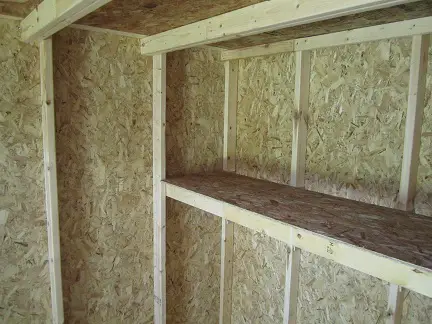
It’s essential to go through your shed with a fine-tooth comb and ensure all the little cracks or holes in the shed are adequately sealed to prevent moisture penetration and loss of temperature control.
Step #6 Insulation

Sheds are not insulated as they are generally designed for storing tools and equipment, so sheds can be extremely hot or cold. Therefore, installing insulation is vital to keep the temperatures bearable.
There is a wide choice of insulation materials that you can use in your tiny house. The material you can use depends on whether you are insulating the home yourself or need to get a professional.
Consider what kind of insulation you want to use. Is price important, or do you want to follow an eco-friendlier alternative?
Remember to have the ceiling and flooring insulated as well.
Step #7 Choosing The Walls
This is when things start to look like they are coming together. Choosing the walls of your tiny home is important. Plywood and drywall are two of the most popular walls used in a tiny house; however, you need to consider whether the house is stationary or mobile.
Plywood is the most economical but doesn’t have a smooth finish. Drywall is more popular but tends to shift and crack in the corners if the house is on wheels.
Ship laps and tongue-and-groove pine boards provide better protection against harsh weather and offer more protection against the cold but are on a higher price scale.
Step #8 Consider Vaulting Your Ceiling
Because sheds are made for storing equipment, the ceilings tend to be about 6 feet high. The International Residential Code (IRC) requires habitable spaces to need a minimum ceiling height of 6 feet 4 inches.
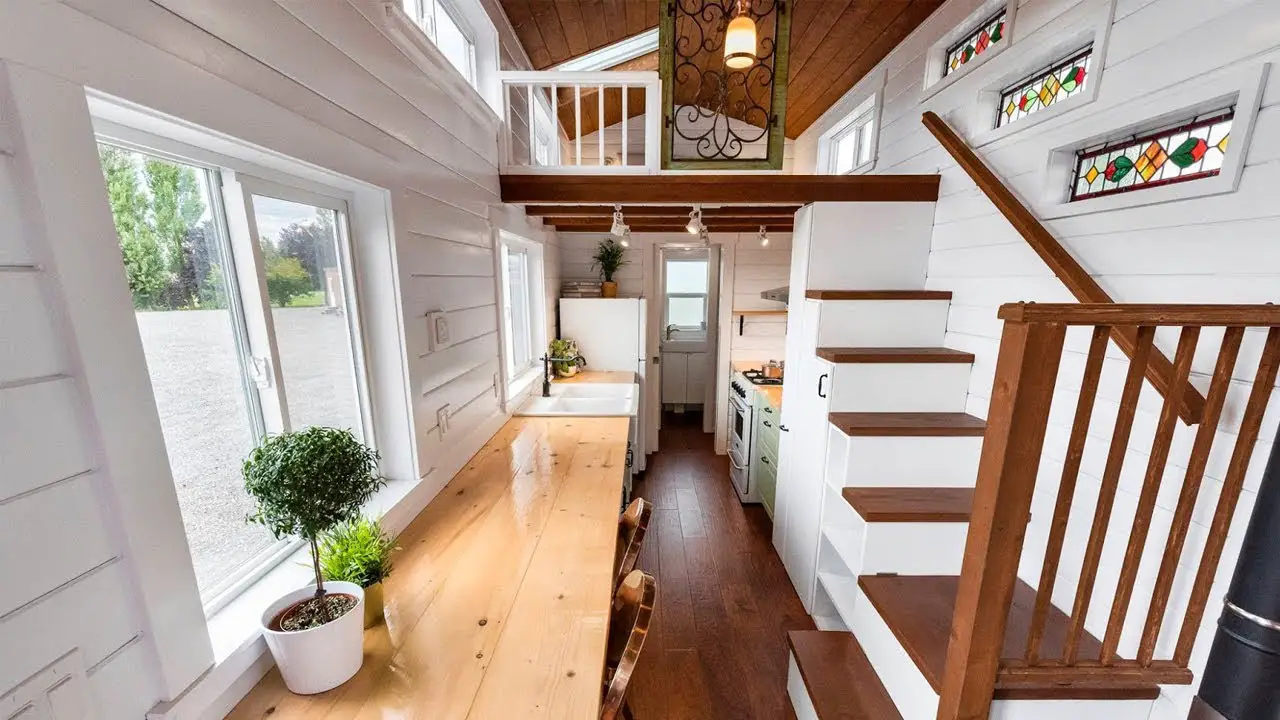
This minimum height can make your tiny house appear much smaller and cramped. A popular option that many people use is creating a vaulted ceiling opening up the space and giving your room a more open feel.
Often this vaulted ceiling is achieved using shiplap or tongue-in-groove pine boards.
Step #9 Finishing Touches
It’s time to add some finishing touches. Choosing windows and doors of your preference and adding a coat of paint will bring your tiny house to life and make all the planning and stress worthwhile.
A hint for choosing windows and doors. Use double window panels to help retain the temperature inside the cabin, and use large windows to create an open space feel in your tiny house.
Due to the limited space inside the tiny house, doors can often be cumbersome. Pocket doors are a great way to give you privacy in the bathroom and bedroom. They also avoid having conventional doors take up unnecessary space that is not available in your tiny house.
What Size Is Considered A Tiny House?
There are no set rules or governance of what size makes a tiny house. However, if you have decided to downsize, you need to make your house a home in which you are happy to live.
However, a rule of thumb is that a tiny house is typically under 400 square feet, with some being as small as 60 square feet. These tiny homes can often be built on trailers, so you can easily move around with your tiny house if you intend to travel more.
You can build bigger if you are building on a foundation but houses that range above 400 to 1000-square-feet range are commonly classified as small homes.
The Advantages And Disadvantages Of A Tiny House
There are always two sides to every situation, and tiny houses are no exception. There are some benefits to owning and living in a tiny house, just as there are disadvantages, but it’s nothing you can’t work around or get used to.
Moving from a big house and downsizing into a tiny home-converted shed can be terrifying, but it has its advantages.
1. Advantages Of A Tiny House
One benefit of a tiny house is less clutter and unnecessary junk that you collect yearly that ends up being obsolete but tends to pile up in the garage or spare bedroom.
Imagine extra time for family and the things you love to do; a tiny house needs less cleaning. Everything has its place, eliminating having to move items around when you want to clean. Also, cleaning four rooms is much faster than having to clean eight.
My favorite benefit is more savings; a tiny house needs less heating and cooling. In addition, owning a tiny home reduces property tax, and you save a lot more on renovations and maintenance, saving you money and giving you extra time with family and doing the things you love.
Which brings us to a better quality of life. The stress and worries of affording the high mortgages can bring us down, adding stress and anxiety that steals time from doing the things that make us happy. Owning a tiny house can also mean becoming debt free sooner.
The money you save on maintenance is money you can use to enjoy life a bit more.
Tiny houses also reduce carbon footprints; you use less energy to heat and cool the inside. And due to its size and storage capabilities, you may buy less produce, reducing the possibility of waste.
2. Disadvantages Of A Tiny House
Most of the time, the drawbacks of tiny houses are still fewer than the benefits, and sometimes, all it needs is some getting used to.
When you are used to a living space of over 2000 square feet, downsizing to a tiny home gives you much less living area, which can be a huge adjustment.
The organization is essential, and everything needs to have a space and place. Unfortunately, tiny houses do not have room for clutter. If you cannot organize things, your tiny house will again look like a storage shed.
Decluttering is indispensable to moving into a tiny house. Family heirlooms, special kid’s projects, or sentimental items can be difficult to eliminate. Tiny houses only have space for the essentials; after all, that’s why we want to downsize, right?
If you love entertaining, it poses a challenge. Summertime is great as you can use the outdoors to extend your home’s entertainment area. Still, winter can be challenging as your space is limited, and standing outside in freezing temperatures doesn’t seem like much fun.
Financing and insurance can be more of a hassle as banks and insurance companies don’t find enough value in the house to use as collateral. That being said, the tiny housing movement has become more popular, and slowly more institutes are taking the chance to finance and insure these homes.
Although tiny houses are legal in all fifty states, each state and county has its own zoning regulations, from some embracing the tiny home movement to others almost outright shunning them.
How Long Does A Tiny House Last?
A tiny house can last you a long time. It can last as long as a traditional house if it is structurally sound, has a strong foundation, and is built with suitable materials.
Mistakes To Avoid When Converting A Shed Into A Tiny House?
No matter how well you prepare for your project, there are bound to be a few hiccups along the way. Here are some mistakes that other tiny house builders have made to make your project smoother.
- Foundations, not considering how the foundation may settle and what foundation would be best to use.
- Moisture control, remember to add extraction vents in bathrooms. Vent hoods in the kitchen are also essential. Consider using dehumidifiers, depending on where you live.
- Extending eaves on your house to protect the walls from the overflow of condensation and rainwater.
- Adding rainspouts.
- Hiring professionals for rough electrical and plumbing work.
- Neglecting to contact the city to get the laws on your tiny shed house.
- Choosing high-maintenance material for the outer shell of the house.
- Underestimating the time and cost needed to build your tiny house.
Conclusion
The tiny home movement has not only taken America by storm, but it’s a movement that is happening worldwide. You may be confronted with legal issues depending on which state you live in, but taking the step to convert your shed into a tiny house offers many who have made the leap a better quality of life and the opportunity to live simpler with less stress of massive mortgages looming over them.
More Shed Posts & Other Posts You Might Like:
- 10 Creative Uses for Sheds: Repurpose & Redesign
- 20 Shed Lighting Ideas to Illuminate Your Space Inside & Out
- 31 Landscaping Around Shed Ideas That You Can’t Stop to Amaze
- How to Turn a Shed into a Chicken Coop
Resources:
- https://www.diy.com/ideas-advice/how-to-build-a-shed-base/PROD_npcart_100673.art
- https://www.tinyhomebuilders.com/help/tiny-house-movement
- https://en.wikipedia.org/wiki/Tiny-house_movement
- https://www.ipx1031.com/best-states-tiny-homes/
- https://www.insider.com/tiny-house-owners-zoning-laws-2020-12
- https://www.home-dzine.co.za/garden/how-to-convert-your-shed-into-a-tiny-house.html
- https://www.rocketmortgage.com/learn/how-much-does-a-tiny-house-cost
- https://www.moneycrashers.com/living-tiny-house-movement-plans/
- https://www.realtor.com/advice/buy/tiny-house-building-zoning-legalities/
- https://abcnews.go.com/Business/living-tiny-home-benefits-drawbacks/story?id=17742823
- https://www.energy.gov/energysaver/insulation-materials
- https://www.energy.gov/sites/prod/files/guide_to_home_insulation.pdf
- https://www.masterclass.com/articles/what-is-shiplap-explained
- https://codes.iccsafe.org/s/IRC2021P2/appendix-aq-tiny-houses/IRC2021P2-AppxAQ#:~:text=1Minimum%20ceiling%20height.,4%20inches%20(1930%20mm).
- https://www.nfpa.org/-/media/Files/White-papers/WhitePaperTinyHomes.ashx
- https://www.lexisnexis.com/community/insights/legal/b/industry-awareness/posts/tiny-homes-an-affordable-housing-solution-or-a-regulatory-nightmare
- https://thetinylife.com/where-are-tiny-homes-legal/#states
- https://www.familyhandyman.com/list/15-shed-building-mistakes-and-how-to-avoid-them/



We would love a shed house if we could get away with it. We have a motorhome and need a place to come back to in the summer and sell the main house. We’re in Michigan and know we’d have to get a building permit.
I enjoyed looking at your photos!